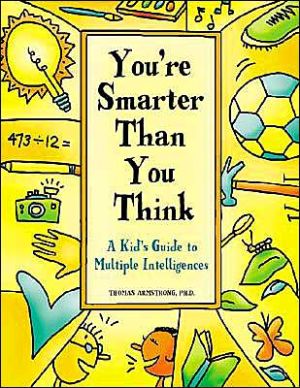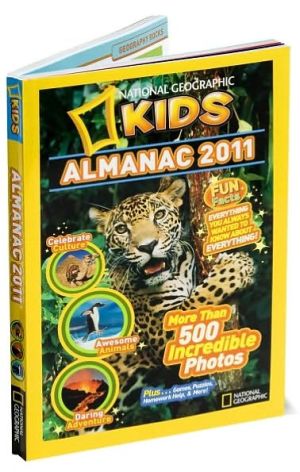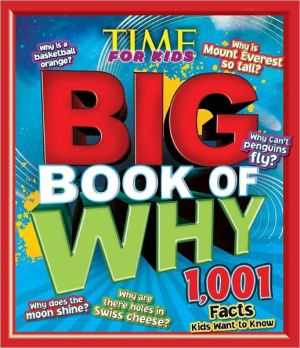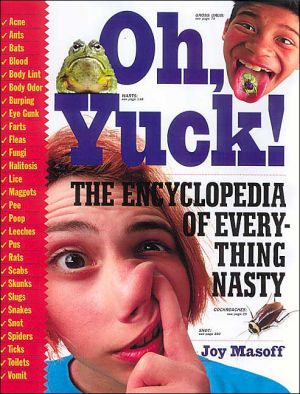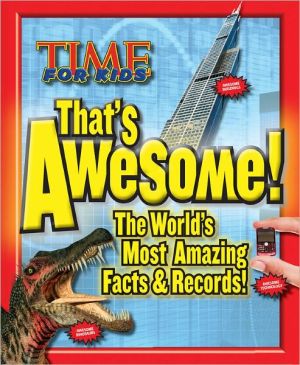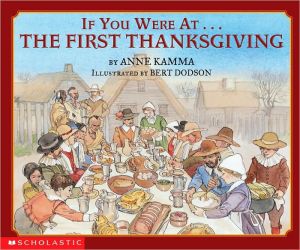You're Smarter than You Think: A Kid's Guide to Multiple Intelligences
Howard Gardner’s theory of multiple intelligences has revolutionized the way we think about being smart. Teachers are using multiple intelligences curricula in their classrooms. Multiple intelligences schools have opened in several states. But it’s not enough for adults to know about multiple intelligences. In true Free Spirit style, this new book helps kids understand Gardner’s theory, what it means to them, and how to make the most of their own abilities and potential.\ In clear, simple...
Search in google:
Howard Gardner’s theory of multiple intelligences has revolutionized the way we think about being smart. Teachers are using multiple intelligences curricula in their classrooms. Multiple intelligences schools have opened in several states. But it’s not enough for adults to know about multiple intelligences. In true Free Spirit style, this new book helps kids understand Gardner’s theory, what it means to them, and how to make the most of their own abilities and potential. In clear, simple language, Thomas Armstrong introduces the theory, explains the eight intelligences, and describes ways to develop each one. He tells young readers how to use all eight intelligences in school, build them at home, and draw on them to plan for the future. Resources describe related books, software, games, and organizations. As kids read the book, try Tom’s ideas, and check out the resources, they stop asking “How smart am I?” and start asking “How am I smart?” This powerful learning tool is recommended for all kids—and all adults committed to helping young people do and be their best.Gloria Levine Bryant - KLIATTAs any educator who has attended an education class or professional training session since the rise of Howard Gardner surely knows, "multiple intelligence" theorists maintain that we need to expand traditional notions of "intelligence" to include not only verbal and logical mathematical ability, but also musical, spatial, bodily-kinesthetic, interpersonal, intrapersonal and a recent addition naturalist intelligence. If a recent survey of this reviewer's sixth-grade classes is any indication, though, students themselves know very little about the theory that drives much of the practice in their classroom. Few authors have chosen to address the younger audience most affected by that theory until now. Fortunately, Thomas Armstrong, an expert on multiple intelligences who makes frequent appearances on TV and radio, has filled that void for young people by writing this volume, which is truly young reader-friendly in format and tone. Armstrong lays out each of his eight chapters (Word Smart, Music Smart, Logic Smart, Picture Smart, Body Smart, People Smart, Self Smart, and Nature Smart) the same way. First there is an inviting "quick quiz" that indicates skills and interests associated with a particular intelligence (such as a connection between liking to play word games and being "word smart"). Then there is a section on what it means to be a particular type of smart followed by advice on how to increase a particular intelligence whether that intelligence is already a strength for a particular student, or not. Teachers looking for ideas on how to "differentiate assignments" as well as study skills instruction for students with different relative strengths will find good suggestions here. Forexample, Armstrong suggests that a person who is music smart might try writing raps to learn math facts, while someone who is body smart could practice math facts while jogging or jump roping. Each chapter ends with a "Look to the Future" section with dozens of potential careers that a person with each type of "intelligence" might want to consider and a resource section with titles and Web sites that offer further information. Two other appealing features are the "Did you know?" factoids studded in blue boxes throughout the text and the thorough index at the end. A minor quibble: Armstrong never reminds his young audience that the theory is just that a theory. He states basic assumptions ("All of the intelligences are different, but they're also equal" and "No matter who you are...you have some form of all of the different intelligences") as if they are undeniable facts. Then again, that's unfortunately how multiple intelligence theory is often presented to educators. Quibble aside, middle-schoolers especially will find much in You're Smarter Than You Think that will get them thinking. What could be better than a book that offers kids a wealth of problem-solving strategies to apply to their own learning and one that's written in an entertaining form that they will actually want to read? KLIATT Codes: J Recommended for junior high school students. 2003, Free Spirit, 186p. illus. index.,
\ Children's LiteratureCoined as a self-help book for kids, this text attempts to empower young people by showing them that they possess intelligence in many forms. Based on the work of Howard Gardner, the book argues that the realm of human intelligence goes beyond the verbal and mathematical skills that are used to determine IQ. Instead, we possess other abilities that provide a more comprehensive view of how smart we truly are. We can indeed be word smart or logic smart, but we can also be music smart, picture smart, body smart, people smart, self smart, and nature smart. When we recognize this broad range of intelligences, we validate the diverse contributions that people of all sorts can make to our world. The text explores each of these intelligences in a separate chapter, claiming that each deserves equal treatment and that each can be further developed with time and reflection. Each chapter follows the same pattern. The chapter titled, "Body Smart," for example, contains a quick quiz to determine if readers are body smart, a description of what it means to be body smart, activities to become more body smart, ways to use a high level of body smart to develop other intelligences, a discussion of potential careers that require high levels of bodily intelligence, and a list of related resources. Easy to read, practical, and grounded in good theory, the book encourages students to look at their abilities comprehensively and recognize that the talents they possess may go beyond that which is traditionally tested in schools. 2003, Free Spirit Publishing, \ — Wendy Glenn\ \ \ \ \ KLIATTAs any educator who has attended an education class or professional training session since the rise of Howard Gardner surely knows, "multiple intelligence" theorists maintain that we need to expand traditional notions of "intelligence" to include not only verbal and logical mathematical ability, but also musical, spatial, bodily-kinesthetic, interpersonal, intrapersonal and—a recent addition—naturalist intelligence. If a recent survey of this reviewer's sixth-grade classes is any indication, though, students themselves know very little about the theory that drives much of the practice in their classroom. Few authors have chosen to address the younger audience most affected by that theory—until now. Fortunately, Thomas Armstrong, an expert on multiple intelligences who makes frequent appearances on TV and radio, has filled that void for young people by writing this volume, which is truly young reader-friendly in format and tone. Armstrong lays out each of his eight chapters (Word Smart, Music Smart, Logic Smart, Picture Smart, Body Smart, People Smart, Self Smart, and Nature Smart) the same way. First there is an inviting "quick quiz" that indicates skills and interests associated with a particular intelligence (such as a connection between liking to play word games and being "word smart"). Then there is a section on what it means to be a particular type of smart followed by advice on how to increase a particular intelligence—whether that intelligence is already a strength for a particular student, or not. Teachers looking for ideas on how to "differentiate assignments" as well as study skills instruction for students with different relative strengths will find good suggestions here. Forexample, Armstrong suggests that a person who is music smart might try writing raps to learn math facts, while someone who is body smart could practice math facts while jogging or jump roping. Each chapter ends with a "Look to the Future" section with dozens of potential careers that a person with each type of "intelligence" might want to consider and a resource section with titles and Web sites that offer further information. Two other appealing features are the "Did you know?" factoids studded in blue boxes throughout the text and the thorough index at the end. A minor quibble: Armstrong never reminds his young audience that the theory is just that—a theory. He states basic assumptions ("All of the intelligences are different, but they're also equal" and "No matter who you are...you have some form of all of the different intelligences") as if they are undeniable facts. Then again, that's unfortunately how multiple intelligence theory is often presented to educators. Quibble aside, middle-schoolers especially will find much in You're Smarter Than You Think that will get them thinking. What could be better than a book that offers kids a wealth of problem-solving strategies to apply to their own learning—and one that's written in an entertaining form that they will actually want to read? KLIATT Codes: J—Recommended for junior high school students. 2003, Free Spirit, 186p. illus. index., \ — Gloria Levine Bryant\ \ \ VOYAThis book is for every teen who has been stymied at school, in sports, or in social situations. Armstrong translates Harvard professor Howard Gardner's work on multiple intelligences into a comprehensible, useful manual for teens and parents. Exploding the myth that intelligence can be pigeonholed into top marks in math and English, Armstrong suggests that there might be as many as eight different types of natural intelligence. He devotes one chapter to each of the eight intelligences, including word, body, music, logic, picture, nature, self, and people smart. For example, in the chapter on picture intelligence, Armstrong includes a personality quiz, characteristics of "picture smart" youngsters, lists of possible jobs and hobbies in that intelligence, as well as intriguing Web sites, clubs, and games for teens who learn through pictures. Armstrong also includes advice for those teens who might struggle with picture learning, suggesting ways to use the other intelligences to strengthen what may seem a weak area. The book creates a revelatory effect in its readers that is positive and enlightening: In discussing the eight intelligences with this reviewer's coworkers, all discovered hidden facets to personalities and to learning styles. As teachers, parents, and teens work to maximize student achievement, this book is an edifying guide to understanding and breaking down stereotypes while building self-esteem. Although Armstrong is sometimes long-winded and preachy about the suggested activities, the book is nevertheless well written and valuable. It is strongly recommended for teens, and it will enhance parenting, and guidance collections. Index. Illus. Further Reading. VOYA Codes: 4Q 4P M(Better than most, marred only by occasional lapses; Broad general YA appeal; Middle School, defined as grades 6 to 8). 2003, Free Spirit, 192p, \ — Caitlin Augusta\ \ \ \ \ School Library JournalGr 6-9-Writing in a chatty tone, Armstrong puts current theories into terms young readers can understand. Eight accessible chapters cover different areas ("Word Smart," "Logic Smart," "Body Smart," etc.), encourage kids to examine their strengths and weaknesses, and suggest activities for growth and improvement. Copyright 2004 Reed Business Information.\ \
